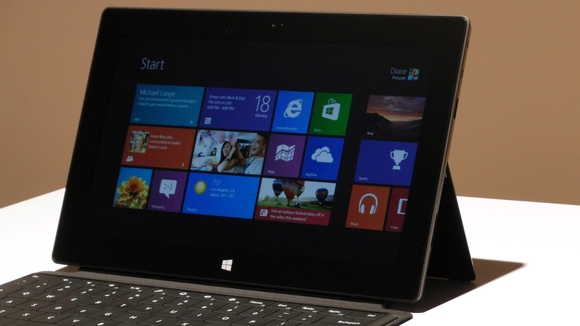Under the Surface, Microsoft is in trouble

Microsoft’s new Surface is a good tablet for the wrong price
Microsoft has decided that it will position itself exactly where Apple is now and target the consumer market. Stage one in Steve Ballmer’s plan is to release the Windows 8 Surface Tablet to the masses, backed with content similar to that which Apple currently offers.
Redmond is coming into the market very late. There are lots of other tablets out there, and Apples are not the only fruit. Ballmer is about to make the sort of mistake which has bedevilled Microsoft for the last decade.
The upcoming Surface has a good ARM-based tablet processor, with what appears to be a reasonable operating system. The only problem is that Microsoft is actually relying on its technology to compete.
The Surface RT has double the memory of its rivals which should help multitasking among apps, as well as “intensive applications” such as graphics-heavy games. Windows 8 should be much better at multitasking than Android or Apple’s iOS. So far there is nothing on the market which can do this.
But the Surface RT also competes against Intel’s x86-based Atom “Clover Trail” Windows 8 tablets, such as the Acer Iconia W510. The Iconia also starts at $500, although it offers a full version of Windows and backward compatibility with existing Windows applications that can run in the Windows 8 desktop. This is a bit of a mistake. Who would chose a product which is less compatible with the desktop if they had a choice? Then there are the x86 Surface products, which should be out next year, that will pitch Intel against ARM on Microsoft hardware.
Surface RT also comes in a 64GB version that costs $699 bundled with the otherwise extra-cost $120 keyboard touch cover. The keyboard makes this bundle a slightly better deal, as does the fact that the tablet will come with a USB 2.0 port which is rare in other tablets and means there will be a good range of storage devices and peripherals. It lacks an HDMI port on the tablet but something like this can be roped in for an extra cost.
Surface RT has a 10.6-inch display. That’s nearly an inch larger than Apple’s 9.7-inch iPad, and a half-inch larger than the typical 10.1-inch Android tablet. This is mostly because it allows Microsoft’s snap-view side-by-side multitasking with any app, something that neither Apple’s iOS or Google’s Android allows. The display is a lower res than most of the other tablets out there.
With a nice design, Microsoft should have a winner here, but it needs much more than that. Ballmer should know that technology or a nice design is not going to cut it. Microsoft had tablets for years, but Steve Jobs ultimately marketed Redmond into oblivion.
What Ballmer should have done is sold the tablet at cost. This would have put a better machine on the market at a better price than the opposition. Ballmer could have made the money back on the content and then slowly raised the price as time moved on. Indeed this was the business model that we were expecting.
However, Ballmer has released the tablet at a cost which is similar to the iPad and now is having to rely on heavy marketing to push his product onto – understandably – suspicious consumers.
One of the ways Ballmer might be trying to elbow his way into the market is by doing deals with his telecommunications channel partners.
The idea is that the various telcos sell packages and subsidise the cost of the tablet. They make their money back on mobile bandwidth or phone packages that would come with the tablet. This might work. It would keep the consumer price up, but reduce the cost of the tablet if sold through partners.
To someone buying a Surface through a partner the deal would look good, particularly if the customer compared it to the high street cost of a Surface. Microsoft would certainly lose a lot less as its margins would remain the same.
Microsoft might also target its tablets through its partners who want to build packages for corporates. However, corporates are slow to upgrade anything, and the thought of sticking their users on tablets is something that will be on the back-burner at least until the economy picks up. Many companies are opening up to BYOD rather than owning the gear themselves.
Our guess is that Microsoft’s Surface will not do as well as Ballmer hopes – and he will have to come up with some cheaper packages next year.